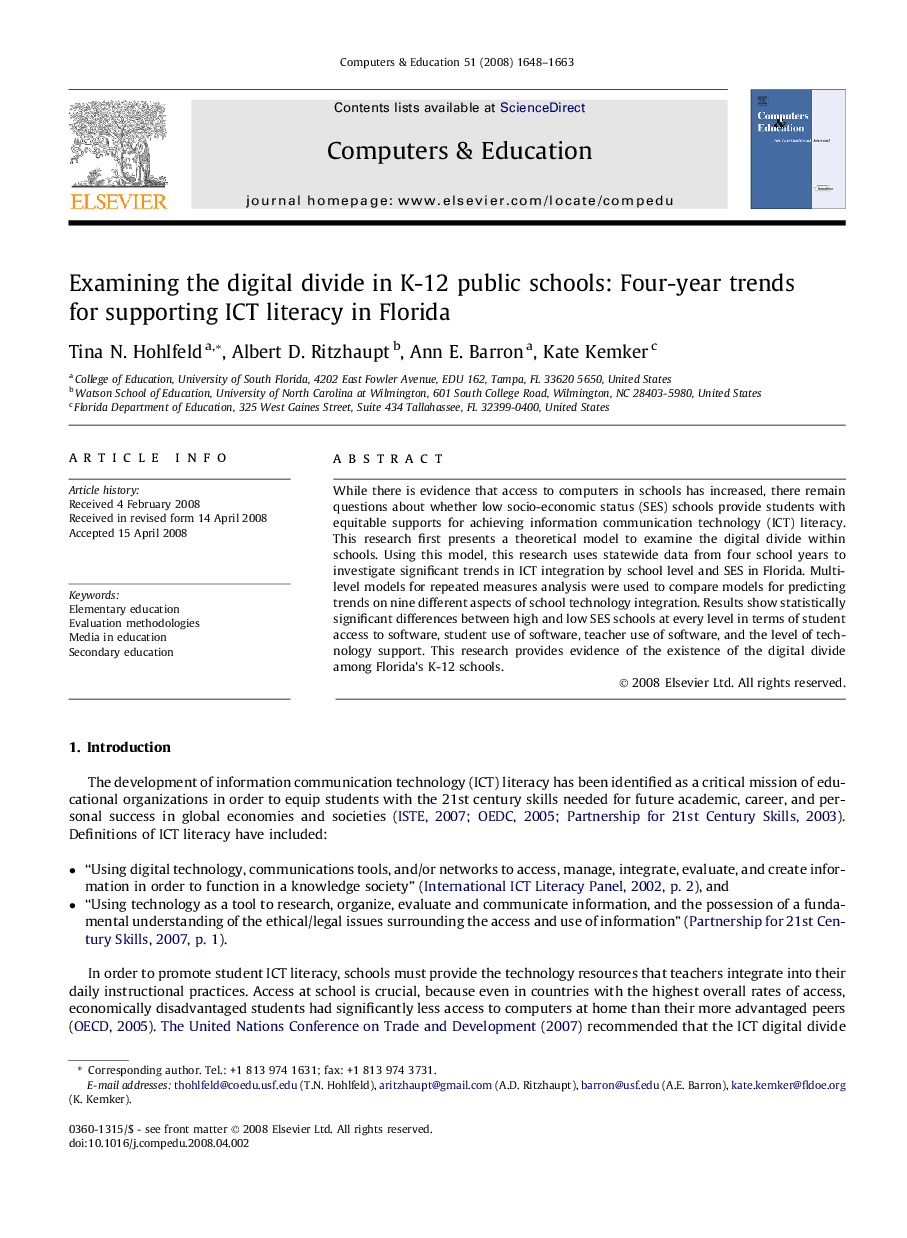| Article ID | Journal | Published Year | Pages | File Type |
|---|---|---|---|---|
| 349884 | Computers & Education | 2008 | 16 Pages |
While there is evidence that access to computers in schools has increased, there remain questions about whether low socio-economic status (SES) schools provide students with equitable supports for achieving information communication technology (ICT) literacy. This research first presents a theoretical model to examine the digital divide within schools. Using this model, this research uses statewide data from four school years to investigate significant trends in ICT integration by school level and SES in Florida. Multilevel models for repeated measures analysis were used to compare models for predicting trends on nine different aspects of school technology integration. Results show statistically significant differences between high and low SES schools at every level in terms of student access to software, student use of software, teacher use of software, and the level of technology support. This research provides evidence of the existence of the digital divide among Florida’s K-12 schools.
